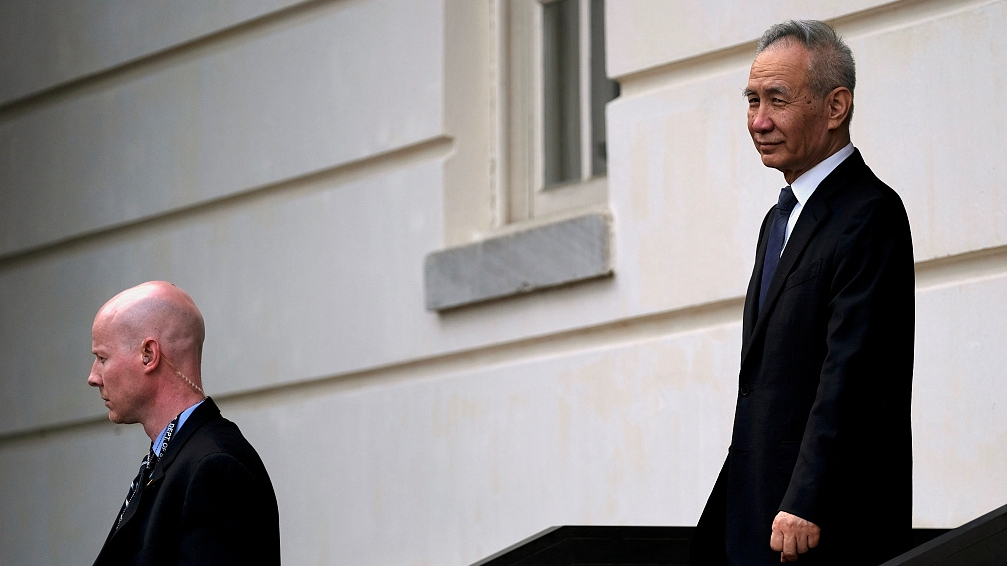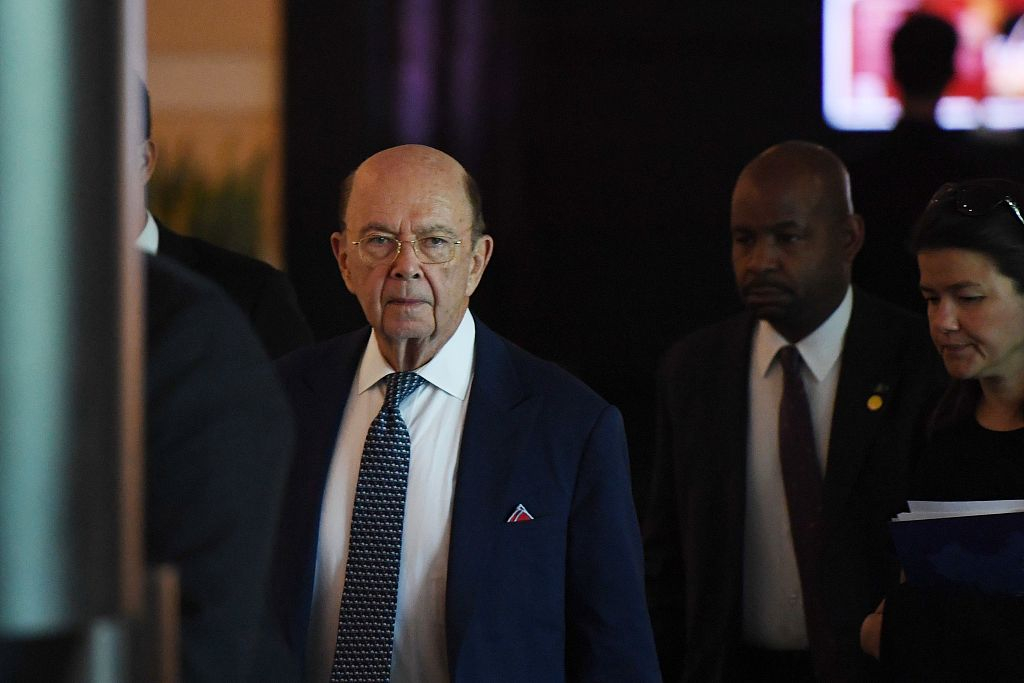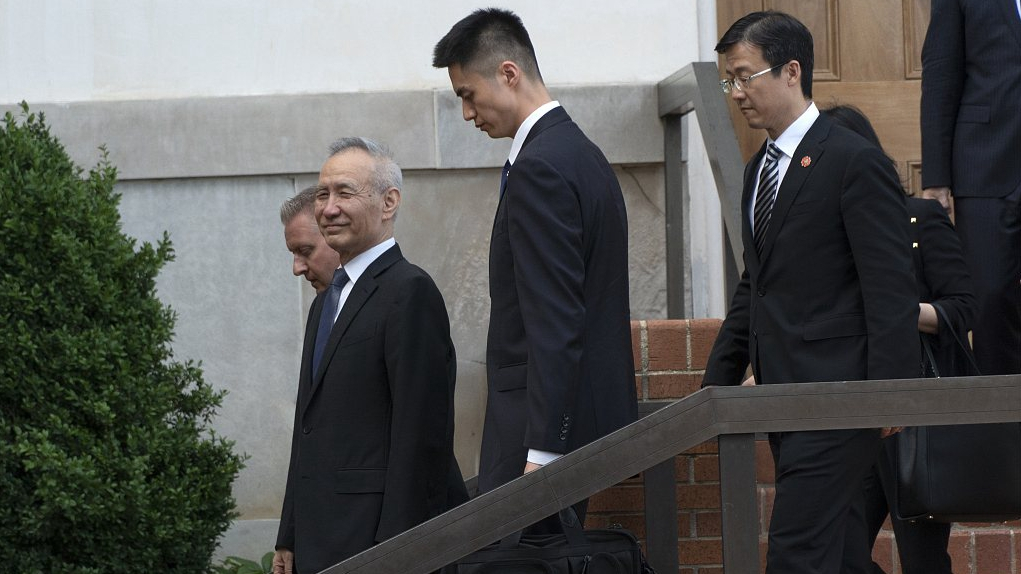
Opinion
08:03, 14-May-2019
Negotiation not dictation is best solution to end U.S.-China trade war
Dr. Summer

Editor's note: With a doctoral degree in communications from the Communication University of China, Dr. Summer has been working in international journalism for 30 years. The article reflects the author's opinion, and not necessarily the views of CGTN.
The latest round of high-level trade talks between China and the United States ended in Washington DC without an agreement. Washington on Monday released a list of 300 billion U.S. dollars worth of Chinese goods that U.S. President Donald Trump threatened to hit with a 25-percent tariff. In retaliation, China announced to raise tariffs on 60 billion U.S. dollars worth of American goods.
I'm not at all surprised by the outcome as it's not an easy job to solve the decades-long trade disputes between the two countries. It is difficult because Trump has put forward unreasonable goals: from a quick cut of trade deficits to a reshuffle of China's economic policies and structures. To make things worse, President Trump has followed an erroneous line of logics when handling the issue.
First, since Washington has decided to solve the trade issue with China through negotiation, it means a deal can be reached by talks between the two sides. It's common sense that when two parties enter a negotiation, it always starts with a proposal from one party, followed by a counter offer from the other party. Negotiation is a process during which the parties reach an agreement through consultations and compromises.

U.S. Commerce Secretary Wilbur Ross (L) walks through a hotel lobby as he heads to the U.S. embassy in Beijing, May 3, 2018. /VCG Photo
U.S. Commerce Secretary Wilbur Ross (L) walks through a hotel lobby as he heads to the U.S. embassy in Beijing, May 3, 2018. /VCG Photo
But in the case of the U.S.-China trade talks, President Trump has always stuck to his campaign slogan of making America great again by an "America First" agenda. According to his logic, as China is at fault for catching up with the United States, Beijing should follow Washington's demands to correct its mistakes. In other words, Trump wants to dictate the agreement to be signed by negotiators from both countries. However, if the Chinese negotiate team also insists on the same principle of "China First" following Trump's logic, how can the two countries reach a deal?
Second, Trump often boasts himself as a great deal maker. In the case of the U.S.-China trade talks, Trump demands that China should sell less to the U.S. but buy more from his country so as to cut the deficits.
But the problem is twofold: On the one hand, it's the U.S. wholesalers who want to buy from China. Even if they do not buy from China, they will buy from other countries, so the trade deficit will shift to other countries. On the other hand, Trump only wants to sell certain goods to China, such as soybeans, corns and natural gas, but China needs other high-tech products banned by the White House.
If the ban can be lifted, it's much easier to solve the deficit problem. Unfortunately, Trump has failed to see the nature of the deficit issue and adopted a forced buy-and-sell attitude, which is hard for any country to agree to. So Trump the great deal maker could end up with no deal at all.
Third, Trump likes to make false claims, namely to take his assumptions as realities. In the case of the U.S.-China trade talks, Trump has issued many contradictory posts on Twitter according to his mood.
The latest examples are: Last Thursday, he first announced his decision to levy new tariffs on 200 billion U.S. dollars of Chinese goods because China “broke the deal”.
The fact is that the Chinese negotiation team led by Vice Premier Liu He was on its way to Washington for the 11th round of high-level talks. If the two parties are still engaged in talks, how can one “break” a deal that has not been signed?

Liu He (L), China's vice premier, departs the Office of the U.S. Trade Representative in Washington, DC, U.S., May 9, 2019. /VCG Photo
Liu He (L), China's vice premier, departs the Office of the U.S. Trade Representative in Washington, DC, U.S., May 9, 2019. /VCG Photo
Then, on Friday, Trump posted that the Chinese trade talks were progressing in “a very congenial manner” followed by another saying there is “no need to rush” a new agreement. But on Saturday, he warned that “the (trade) deal will become far worse for them if it has to be negotiated in my second term”. The warning comes from his speculation that the Chinese side is waiting for a Democrat to win in the 2020 presidential race.
Meanwhile, during an interview in Washington, Liu He said, "Right now, both sides have reached mutual understanding in many things, but frankly speaking, there are also differences. We think these differences are significant issues of principle. We absolutely cannot make concessions on such issues of principle."
So, it's actually Trump who is constantly changing. As a matter of fact, it is Washington under Trump that has broken several deals, either bilateral or multilateral or international, over the past two years.
One positive factor about the U.S.-China trade talks is that both sides have indicated a willingness to continue negotiations. It is true that where there is a will, there is a way. But it is also true that the way could lead to destruction if the will is irrational. I would keep my fingers crossed for an early resumption of the talks with more rational expectations on both sides.
After all, neither the United States nor China will emerge as a winner of a continuous trade war and conflicts between the two largest economies would mean disasters to the world!
(If you want to contribute and have specific expertise, please contact us at opinions@cgtn.com.)

SITEMAP
Copyright © 2018 CGTN. Beijing ICP prepared NO.16065310-3
Copyright © 2018 CGTN. Beijing ICP prepared NO.16065310-3